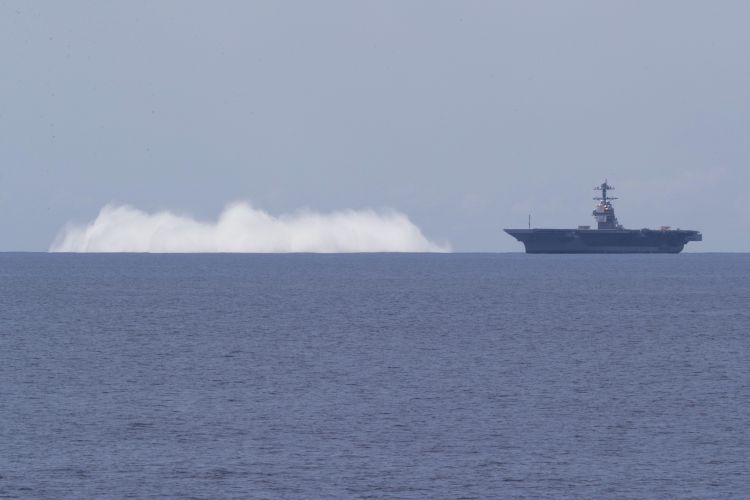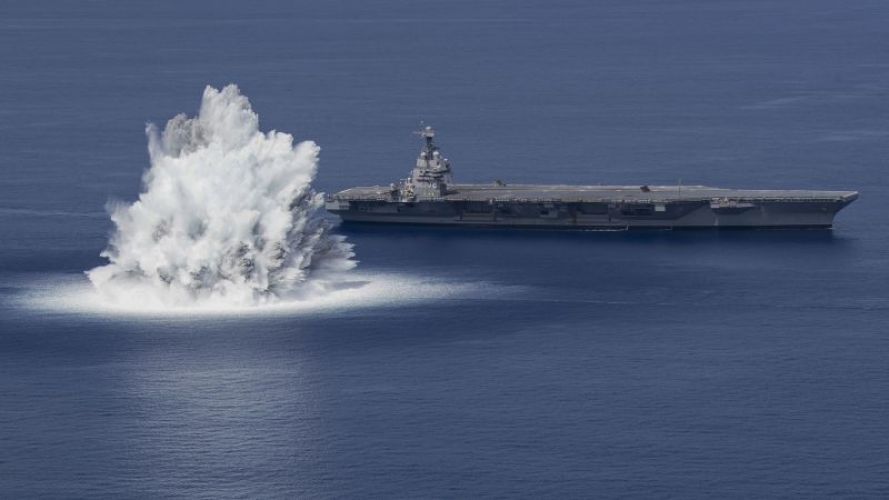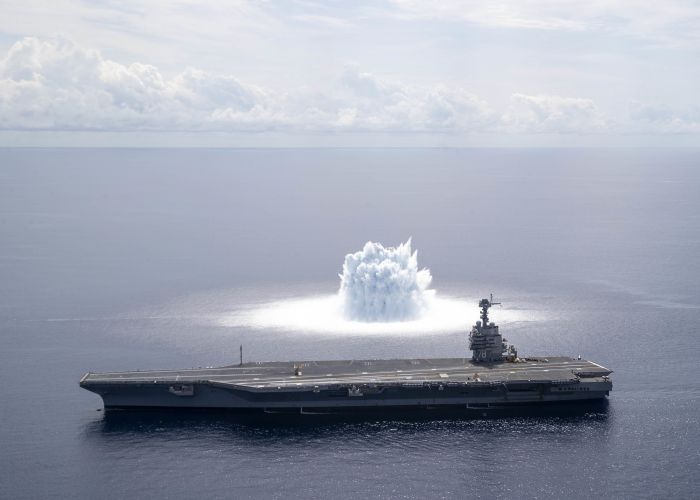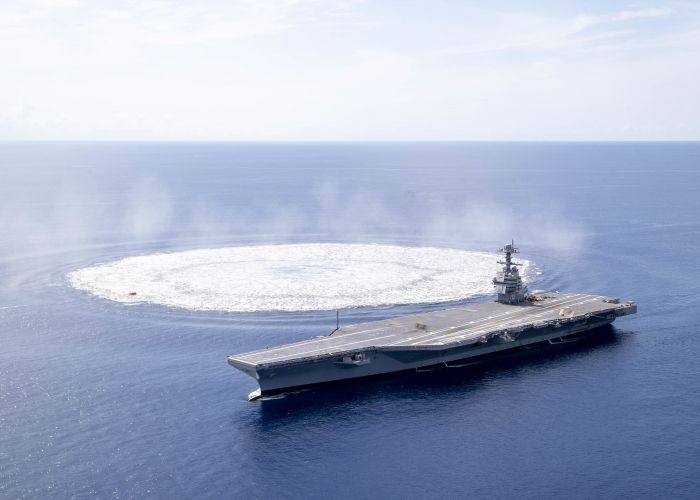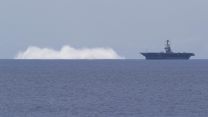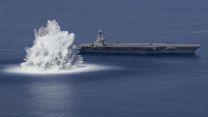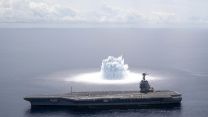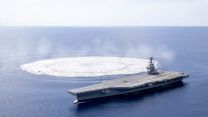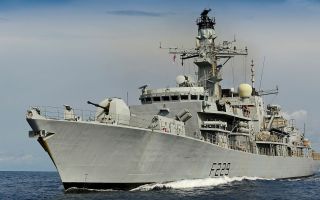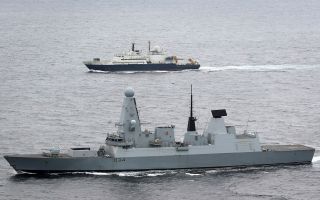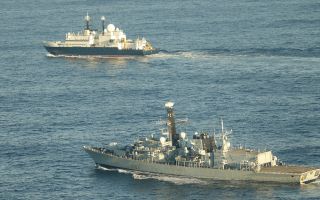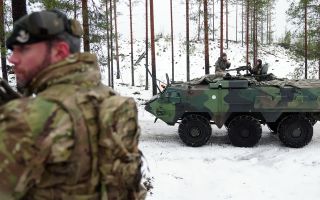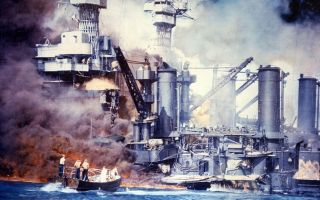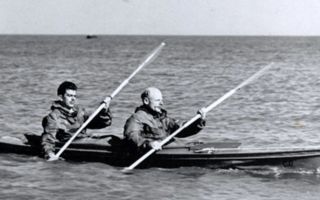'Full Ship Shock Trials' For Aircraft Carrier USS Gerald R. Ford
A US Navy aircraft carrier has been carrying out 'full ship shock trials' with live explosives to test the vessel's ability to withstand active battle conditions.
On Friday, off the east coast of the US, USS Gerald R. Ford completed the first scheduled explosive event while in the Atlantic Ocean.
The first-in-class aircraft carrier was designed by using advanced computer modelling methods, testing and analysis to give the warship the ability to withstand such conditions.
During these trials, the ship is subjected to three explosive charge detonations, each of which occurs closer to the ship.
The US Navy then uses the data received from these explosions to validate and confirm the overall shock hardness of the vessel and identify any vulnerabilities to ensure they are corrected.
These kinds of trials are nothing new – historically, they have been carried out over several decades by the US on ships like the Littoral Combat Ships USS Jackson and USS Milwaukee in 2016, on the amphibious assault ship USS Wasp in 1990, and the guided-missile cruiser USS Mobile Bay in 1987.
This is the first time since 1987 that a US aircraft carrier has undergone this kind of trial, the last being USS Theodore Roosevelt.
All trials are being conducted within a narrow schedule that meets environmental standards for the protection of marine life migrating in the test area.
USS Gerald R. Ford is the newest and most advanced aircraft carrier in the US Navy and finished a successful 18-month post-delivery test and trials period in April.
Once the shock trials are completed, the warship will return to a dry dock and enter a planned incremental availability for six months, undergoing modernisation, maintenance and repairs.
